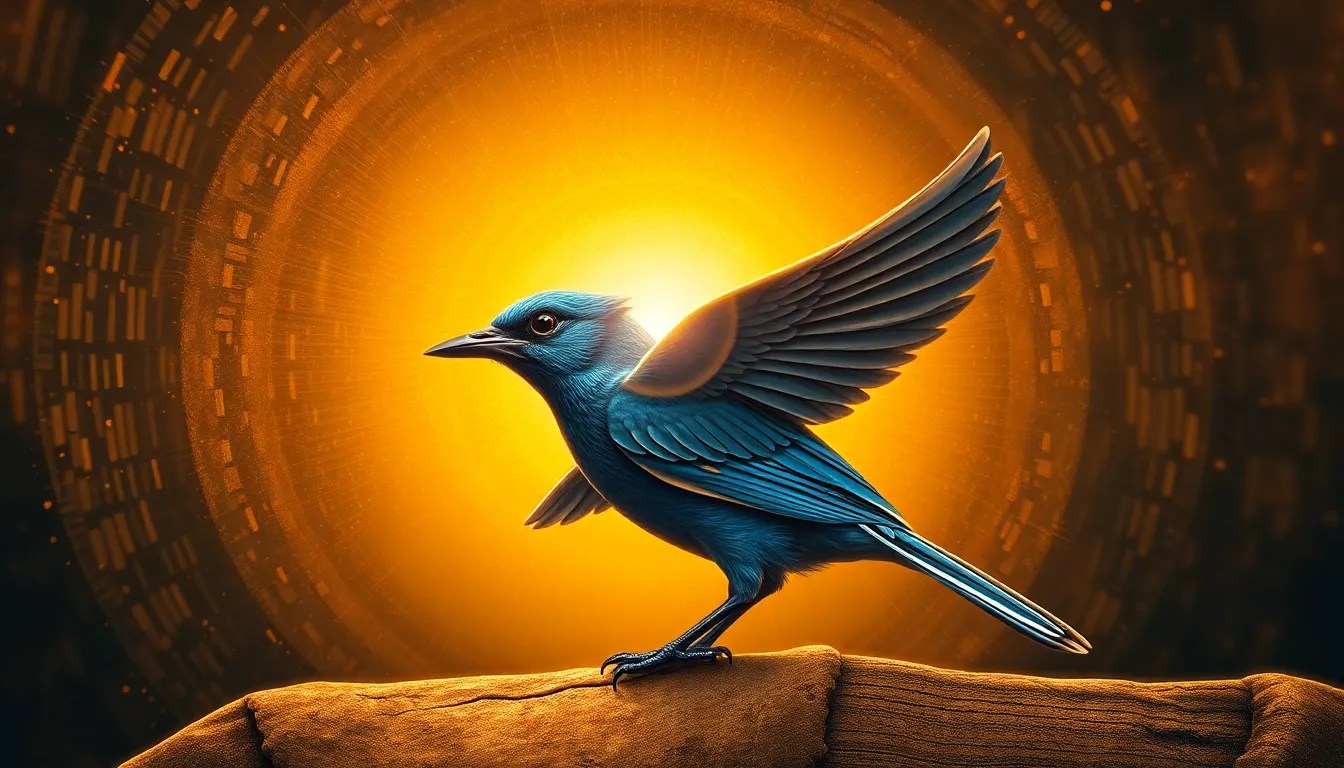The Role of the Sacred Blue Jay in Babylonian Myths
I. Introduction
Babylonian mythology is a complex tapestry of stories, symbols, and beliefs that originated in ancient Mesopotamia, one of the world’s earliest civilizations. This mythology is rich with deities, creation tales, and various animal symbols that played crucial roles in the spiritual and daily lives of the people.
In ancient Mesopotamian beliefs, animals were not merely part of the natural world; they were imbued with spiritual significance and often represented divine messages or characteristics. Among these sacred animals, the Blue Jay stood out as a particularly revered figure.
This article delves into the significance of the Sacred Blue Jay in Babylonian mythology, exploring its symbolism, its role as a messenger of the gods, its involvement in creation myths, and its influence on religious practices, art, and literature.
II. The Symbolism of the Blue Jay in Ancient Cultures
Birds, especially those with vivid colors like blue jays, have often been symbols of various concepts in mythologies worldwide. Generally, blue birds are associated with:
- Freedom and transcendence
- Communication and expression
- Spirituality and connection to the divine
In Babylonian culture, the Blue Jay was specifically associated with:
- The heavens and divine communication
- Wisdom and intelligence
- Fertility and prosperity
Comparatively, blue birds in other cultures also carry significant meanings. For instance, in Native American beliefs, blue jays are seen as tricksters or guardians of the forest, while in Chinese culture, they symbolize good fortune and happiness.
III. The Blue Jay as a Messenger of the Gods
In Babylonian mythology, animals frequently served as divine messengers, bridging the gap between the earthly realm and the divine. The Blue Jay was particularly revered for its role as a communicator between gods and humans.
Legends often depict the Blue Jay delivering messages from gods to mortals, conveying important prophecies or warnings. One notable myth features the Blue Jay relaying a message from the god Enki, urging humanity to honor the earth and its resources.
In these stories, the Blue Jay’s vibrant plumage was thought to symbolize the light of the divine, guiding humans toward enlightenment and wisdom.
https://www.youtube.com/watch?v=Tm5i1lT5hkg
IV. The Blue Jay in Creation Myths
The Blue Jay also plays a significant role in Babylonian creation stories. In some tales, it is said that the Blue Jay was present at the dawn of creation, witnessing the birth of the world. Its song is believed to have helped awaken the first beings from primordial chaos.
Symbolically, the Blue Jay represents the cyclical nature of life and death, embodying the idea that creation and destruction are interconnected. This duality is essential in Babylonian cosmology, where the land’s fertility is often linked to the divine influence of animals like the Blue Jay.
Moreover, the Blue Jay is associated with the fertility of the land, as its appearance often coincided with the changing seasons and agricultural cycles, symbolizing abundance and growth.
V. The Blue Jay in Religious Rituals and Practices
The Sacred Blue Jay held a significant place in Babylonian religious ceremonies. Its presence was believed to attract the favor of the gods, making it a vital component of various rituals.
Offerings and sacrifices involving the Blue Jay were common, as it was thought that presenting this sacred bird to the gods would ensure blessings, prosperity, and protection for the community.
The role of priests and priestesses in honoring the Blue Jay was crucial. They performed elaborate rituals, often accompanied by music and hymns, to invoke the bird’s spirit and seek its guidance.
VI. The Blue Jay’s Influence on Art and Literature
The Blue Jay’s influence extended beyond mythology and rituals into the realm of art and literature. It was frequently depicted in Babylonian artwork, often shown in vibrant colors that mirrored its real-life appearance.
References to the Blue Jay can be found in various literary texts and hymns, where it is celebrated as a symbol of beauty and divine connection. These depictions illustrate the reverence held for this bird and its multifaceted role in society.
Throughout Mesopotamian history, the representation of the Blue Jay evolved, reflecting changes in cultural beliefs and artistic styles, yet its core symbolism remained intact.
VII. Modern Interpretations and Legacy
Today, contemporary scholars view the Blue Jay in Babylonian mythology through multiple lenses, including anthropology, history, and art history. The bird is recognized not only for its role in ancient narratives but also as a symbol that continues to resonate.
The Blue Jay has impacted modern cultural representations, appearing in literature, art, and even popular media as a symbol of wisdom, communication, and divine connection.
Moreover, the Blue Jay maintains relevance in modern spiritual practices, where it is sometimes invoked in rituals aimed at fostering communication with the divine or seeking guidance.
VIII. Conclusion
In summary, the Sacred Blue Jay occupies a multifaceted role in Babylonian myths, serving as a symbol of divine communication, fertility, and the interconnectedness of life and death. Its significance in ancient rituals, artistic representations, and literary texts underscores its importance in the spiritual life of the Babylonians.
The enduring legacy of the Blue Jay invites further exploration of Mesopotamian mythology and its rich tapestry of symbols that continue to inspire and captivate those interested in ancient beliefs and their relevance today.



